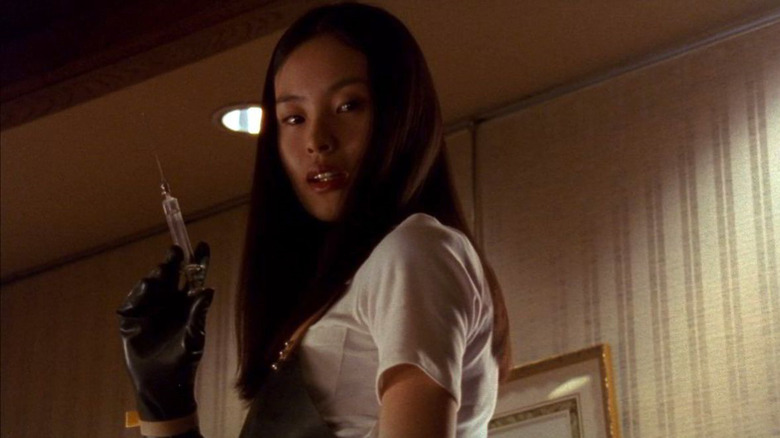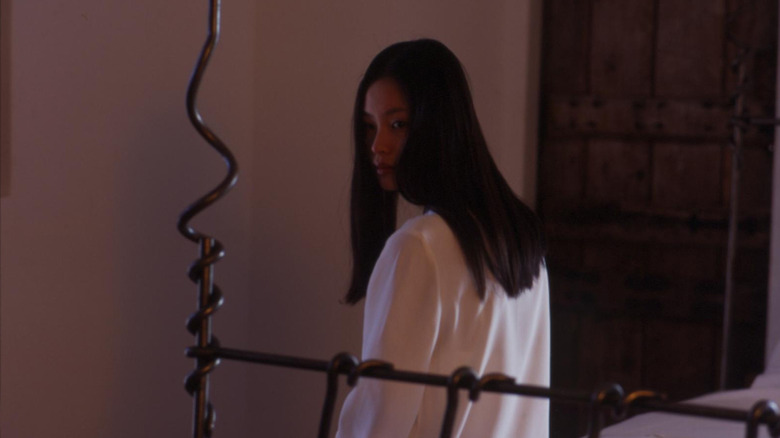Takashi Miike Was Careful With Where He Put The Most Violent Parts Of Audition
Dates can go very wrong in horror movies. Carrie White's prom date with Tommy Ross goes up in flames before the last dance, in both Stephen King's novel "Carrie" and Brian De Palma's film adaptation. In Sean Byrne's Aussie horror movie "The Loved Ones," poor Brett doesn't even make it to his school dance after rejecting Lola, who hosts a macabre dance of her own. All grotesqueries of romantic relationships find screen time in the genre.
So when Takashi Miike signed on to adapt Ryū Murakami's 1997 novel "Audition," he picked up on its themes of voyeurism, sexism, and exploitation in the entertainment industry — its leading man Shigeharu Aoyama (Ryo Ishibashi) holds a shady "audition" for his next wife, launching the story's events into motion — but left its nastiest moments for the finale, long after audience is embedded into the mysterious allure of Aoyama's chosen bride, Asami Yamazaki (Eihi Shiina). Wielding needles, drug cocktails, and a wire saw, Asami proves to be a jealous lover who'll take her rage out on the flesh of any man that crosses her.
Speaking with SyFy, the legendary director delivered some clarity on the architecture of "Audition" and its strategic placement of violence:
"The way that film is structured... it starts as one thing and it slowly breaks down into something different. When we start to focus on her private life the film starts breaking down. It takes about an hour for that to happen. There's a point in a film where people will decide if they will leave the theater or if they want to stay and continue watching the movie. We intentionally made a film where it seems to completely break down and goes in a completely different direction. We structured it that way because we felt it worked very well for that film."
Kiri-kiri-kiri...
Miike isn't kidding when he says that his adaptation starts as one thing and gradually ends up another. "Audition" begins like a cringey rom-com, with the widower Aoyama posing as a movie producer to meet prospective new partners. A sweet young victor emerges from the process, and it's all fun and games until a massive human-sized bag starts writhing in her apartment. Aoyama's post-audition phone call cuts through the eerie stillness in the strange girl's room where she is unnaturally hunched over, seemingly awaiting that very call for days. The bag that moves in the background is responsible for one of the greatest jump scares in horror movie history — number 11, according to Bravo's The 100 Scariest Movie Moments. It reveals Asami's unstable mental state, which comes to a head in the movie's horrifying climax.
Without getting into the gruesome specifics, Asami unveils herself to be a volatile woman whose traumatic childhood fomented a rather unhealthy connection between love and pain. In stark contrast to the restraint of the rest of the movie's 113 minute runtime, the last 20-odd minutes are a parade of violations across home, family, and flesh. The bravest of the brave can try to stomach a clip of the sequence here (here there be spoilers):
Fans and critics are divided in their interpretations of the footloose finale: are the torturous sequences the result of Aoyama's misogynist nightmares, or is the story a cautionary feminist tale of vengeance? Whatever it is, it'll keep you up at night.

